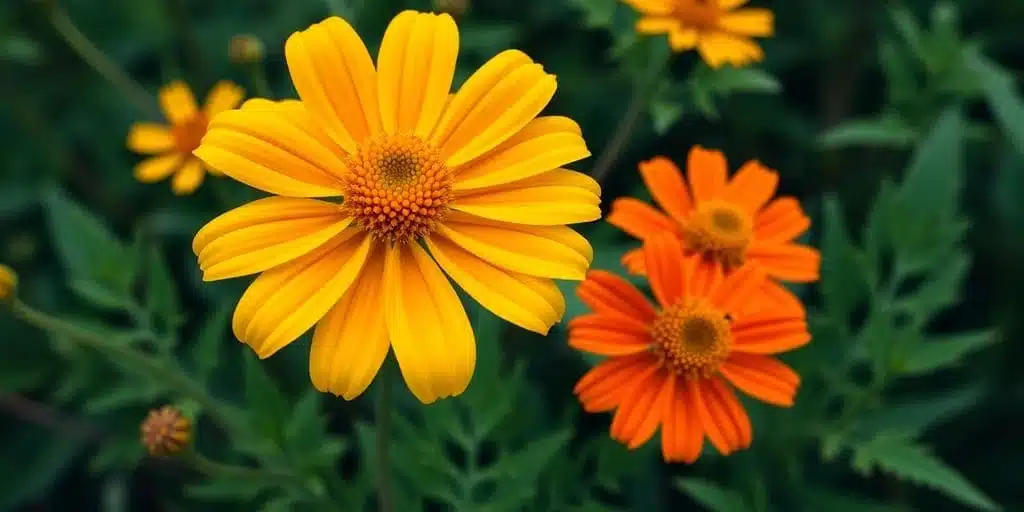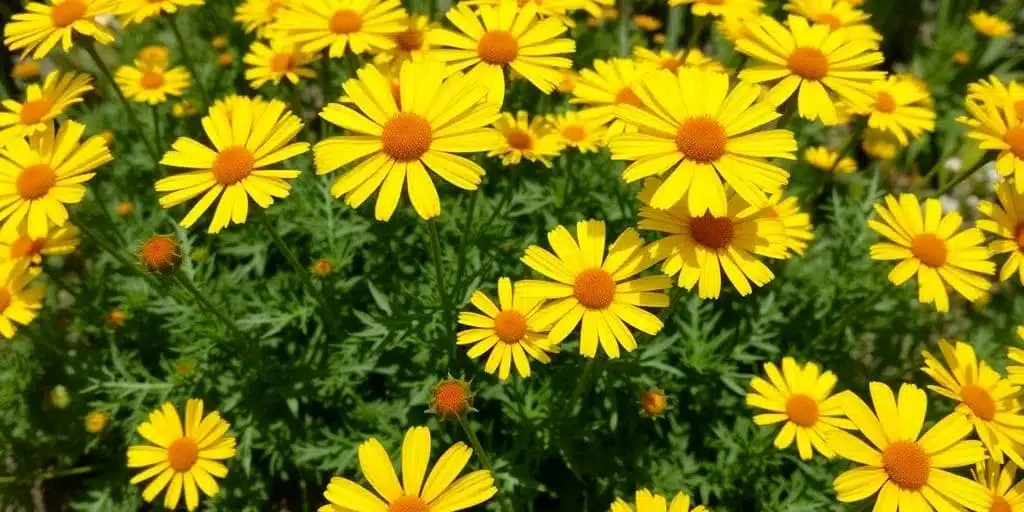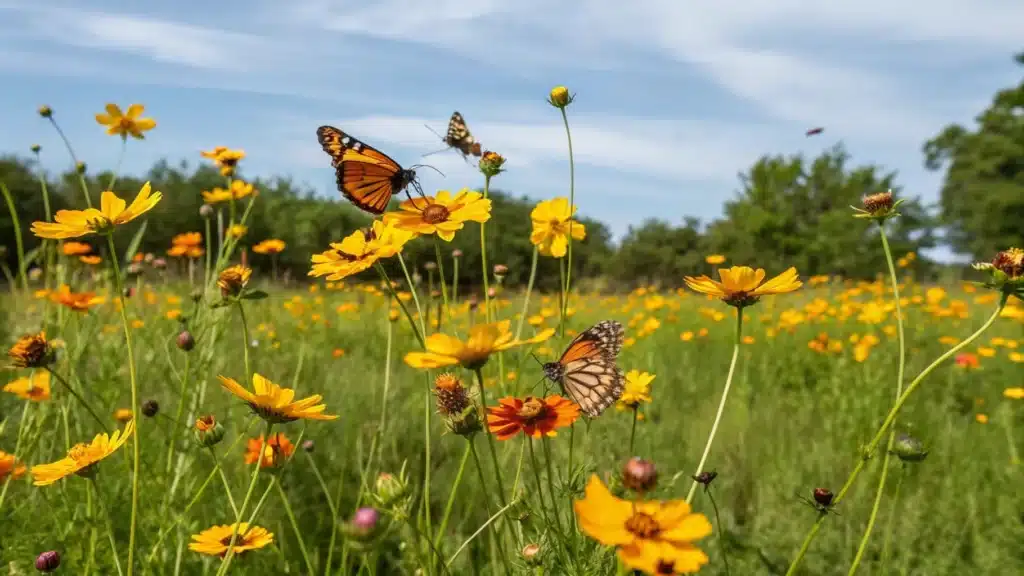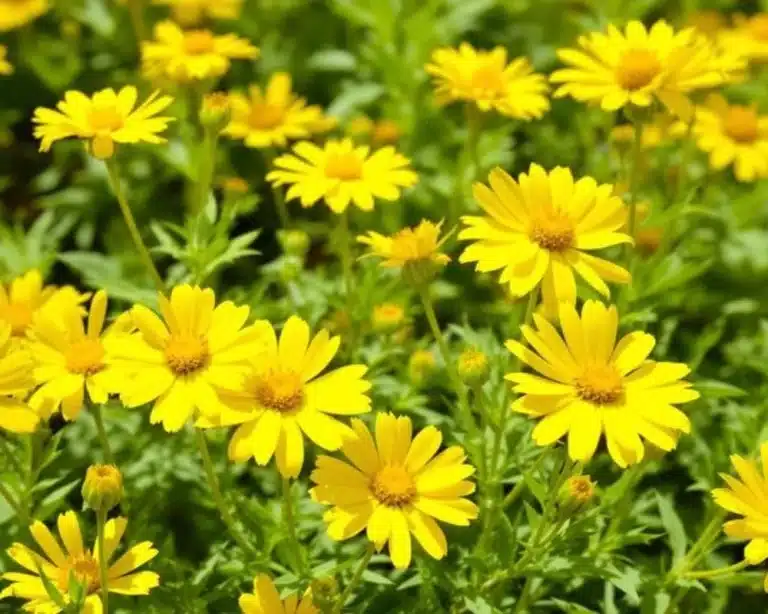Coreopsis plants, often called tickseed, are a favorite among garden enthusiasts for their bright, cheerful blooms and easy care. With over 70 species, these plants can add a splash of color to any garden setting. Whether you’re a seasoned gardener or just starting out, coreopsis plant is a great choice for a low-maintenance, high-impact plant that attracts pollinators and thrives in a variety of conditions.
Table of Contents
Understanding the Coreopsis Plant

Coreopsis Varieties and Species
Coreopsis plant is a diverse genus within the Aster family, boasting over 70 species. These plants, often called “tickseed,” are available as both annuals and perennials. While many species are native to the United States, others hail from Central and South America. Coreopsis varieties are celebrated for their vibrant blooms, which range in color from yellow and orange to red. Each variety offers unique characteristics, making them a favorite among gardeners who enjoy experimenting with different colors and forms.
Native Habitat and Distribution
Coreopsis plants are primarily native to North America, thriving in regions from Canada to Mexico. They naturally flourish in open fields, meadows, and along roadsides. This adaptability allows them to grow in a variety of habitats, from grasslands to open woodlands. Their ability to thrive in diverse environments makes them a resilient choice for gardeners looking to introduce native plants into their landscapes.
Key Characteristics of Coreopsis
Coreopsis is known for its showy flowers and ease of growth. These plants typically bloom from late spring to late summer, attracting a host of pollinators, including butterflies and bees. Coreopsis is drought-tolerant and can withstand poor soil conditions, making it a low-maintenance option. Their height varies, often ranging from one to three feet, with some dwarf varieties staying under two feet. The plants are also deer-resistant, adding to their appeal in gardens where wildlife is a concern. With their bright, cheerful flowers, Coreopsis plant adds a splash of color and life to any garden.
Planting Coreopsis for Optimal Growth
Choosing the Right Location
When it comes to picking a spot for your coreopsis plant, aim for a place that gets plenty of sun. These plants love basking in the sunlight. While they can tolerate a bit of shade, too much can affect their bloom time. Make sure the soil drains well to prevent water from pooling around the roots. Standing water is a big no-no for these sun-loving beauties.
Soil Preparation and Requirements
Coreopsis isn’t too picky about soil type, but it thrives in well-draining soil. Before planting, loosen the soil surface to help with drainage. If your garden soil is heavy or clay-like, mix in some sand or grit to improve drainage. Adding organic matter can also help, but avoid over-fertilizing as it can reduce flowering.
Planting Techniques and Tips
- Dig a Hole: Make it as deep as the root ball and a bit wider.
- Place the Plant: Set the coreopsis plant so the top of the root ball is just above the soil surface.
- Water Well: Give it a good soak right after planting.
- Mulch: Add a layer around the plant to keep the soil moist and block weeds.
Planting coreopsis is straightforward, but a little extra care in the beginning goes a long way. Keep an eye on moisture levels, especially if the weather is dry.
When planning your garden, consider combining coreopsis with complementary types of shrubs to create depth and layers in your planting scheme.
Caring for Your Coreopsis Plant
When it comes to watering your coreopsis, think of a wrung-out sponge. You want the soil to be moist but not soggy. Initially, give them a good soak at planting time, then maintain that level of moisture. It’s crucial to avoid standing water as coreopsis doesn’t like wet feet. After the first month, consider feeding your plants with a balanced plant food like Miracle-Gro® Shake ‘n Feed® Rose & Bloom Plant Food. This not only nourishes the plants but also enriches the soil with beneficial microbes.
Pruning is more than just a tidy-up job for your coreopsis plant. Regular deadheading encourages a second bloom, keeping your garden vibrant. For perennial varieties, cut the flower stalks back to the ground after the blooms fade. Annuals don’t need this, but a trim now and then keeps them looking neat. After the last bloom of the season, let the plants set seed. Birds will love the winter snack, and you might find new plants popping up in spring.
Coreopsis is generally hardy, but like any plant, it can face challenges from pests and diseases. Keep an eye out for aphids and beetles, which can be managed with organic insecticidal soap. Fungal diseases can be a problem, especially in damp conditions. Ensure good air circulation and avoid overhead watering to keep these issues at bay. If problems persist, you might need to remove affected parts of the plant to prevent spreading.
Tip: Regular maintenance and observation are key. A little attention goes a long way in keeping your coreopsis plant healthy and blooming beautifully.
Enhancing Your Garden with Coreopsis

Companion Planting Ideas
Incorporating coreopsis into your garden offers a burst of color that complements other plants beautifully. Pair coreopsis with purple coneflower, garden phlox, or Joe-pye weed for a prairie garden vibe. If a cottage garden is more your style, consider combining coreopsis with bee balm, salvia, and yarrow. These combinations not only provide a colorful bloom but also attract pollinators, enhancing the ecological balance of your garden.
For a balanced garden design, pair coreopsis with plants like bee balm or astrantia. Check out tips on Astrantia Care to complement your coreopsis blooms.
Designing with Coreopsis
Coreopsis is versatile and can be used in various garden designs. Their bright color makes them ideal for borders and edges. Taller varieties can be planted towards the back of garden beds, adding height and drama, while smaller types work well at the front, ensuring they don’t overshadow other plants. Experiment with different layouts to find what works best for your space.
Incorporating lavender alongside coreopsis can create a fragrant and visually appealing garden layout. Learn more about how to grow lavender trees for aromatic gardens.
For a tropical flair, combine coreopsis with greenery such as small palm trees, which add structure and texture to your garden design.
Seasonal Interest and Bloom Time
Coreopsis blooms from late spring to late summer, offering a long-lasting colorful bloom period. This extended bloom time ensures your garden remains vibrant throughout the growing season. Consider planting different varieties to stagger bloom times and maintain a consistent display of bright color in your garden.
Propagation and Maintenance of Coreopsis
Methods of Propagation
Propagating coreopsis is a straightforward process that can be done through seeds, division, or cuttings. For the annual variety, sow seeds directly into the ground in early spring. Make sure the soil is moist and cover the seeds lightly, as they need light to germinate. For the perennial variety, you can start seeds indoors in late winter and transplant them after the last frost.
Division is another effective method, especially for perennial varieties. Dig up mature plants, at least two years old, and carefully split them into smaller sections, ensuring each has roots and leaves. Replant these divisions immediately.
Annual and Perennial Care
Coreopsis plant requires minimal maintenance. Annual varieties are self-seeding, ensuring a vibrant display year after year without much effort. For perennial varieties, cutting back the plants in the fall to about 6 inches helps them return stronger in the spring.
Watering should be moderate. Once established, coreopsis prefers to be on the dry side. Avoid overwatering to prevent root rot. Incorporate organic matter into the soil to improve drainage and nutrient content.
Troubleshooting Common Issues
Despite being hardy, coreopsis can face some challenges. Watch out for pests like aphids and coreopsis beetles. Use insecticidal soap to manage these pests effectively. If your plants appear leggy or are not blooming well, they might need more sunlight. Ensure they are planted in a sunny location for optimal growth.
Regularly thinning and deadheading your coreopsis plant not only keeps the plants tidy but also encourages more blooms. This simple task can make a significant difference in the plant’s appearance and health throughout the growing season.
Coreopsis in Wildlife and Ecology

Attracting Pollinators
Coreopsis flowers, with their bright and cheerful blooms, are a magnet for pollinators like bees and butterflies. These insects are drawn to the vibrant colors and the abundance of nectar. Among the various species, Coreopsis verticillatum is particularly effective in luring these beneficial creatures. If you’re planning to create a pollinator-friendly garden, incorporating a wide range of coreopsis species can significantly boost your garden’s appeal to these essential insects. Not only do they add beauty, but they also play a vital role in supporting the pollinator population.
Supporting Local Wildlife
Beyond pollinators, coreopsis plants offer benefits to other forms of wildlife. Birds, for instance, are attracted to the seeds produced by mature coreopsis flowers. This makes plants like Coreopsis grandiflora and Coreopsis rosea excellent choices for gardeners looking to support birdlife. Rabbits might occasionally nibble on the green leaves, but deer generally avoid these plants, making them a safe bet for wildlife-friendly gardens.
Environmental Benefits of Coreopsis
Coreopsis species are native to North America and parts of South America, thriving in a variety of climates and conditions. Their adaptability means they can grow in less-than-ideal soils, offering environmental benefits such as erosion control and soil stabilization. Additionally, coreopsis plants can help maintain local biodiversity by providing habitat and food sources for a range of wildlife. By planting species like Coreopsis specy and others, gardeners contribute to the ecological health of their area.
Selecting the Perfect Coreopsis for Your Garden

Popular Coreopsis Varieties
When it comes to choosing coreopsis, you’re spoilt for choice. There are over 70 species and countless hybrids. Some standouts include ‘Moonbeam’ with its soft lemon-yellow flowers, and ‘Mango Punch’ known for its apricot blooms. For those who love vibrant colors, ‘Early Sunrise’ offers a burst of yellow that truly lives up to its name. These varieties not only add a range of color to your garden but also attract pollinators like bees and butterflies.
Considerations for Different Climates
Coreopsis is pretty adaptable, but it’s important to pick varieties that fit your climate. In warmer areas, perennial types thrive, while annuals might be better in colder regions. Always check the plant’s hardiness zone before buying. If you’re in a rainy area, ensure good drainage to prevent root rot.
Tips for Container Gardening with Coreopsis
Container gardening with coreopsis is a great option if space is limited. Choose smaller varieties like ‘Nana’ or ‘Baby Sun’ which are perfect for pots. Ensure your container has drainage holes and use a well-draining soil mix. Regular watering is key, but avoid waterlogging. Place them in a sunny spot to encourage blooming.
Remember: Coreopsis is not just about beauty; these plants are tough and can handle a bit of neglect. They’re perfect for gardeners of all levels.
Conclusion
Growing coreopsis is a breeze, even if you’re not a seasoned gardener. These plants are tough, needing just a sunny spot and some well-drained soil to thrive. Once they’re settled in, they pretty much take care of themselves. Plus, they bring a splash of color to your garden with their bright blooms. Whether you’re looking to attract pollinators or just want some easy-to-grow flowers, coreopsis is a great choice. So go ahead, plant some, and enjoy the cheerful display they offer year after year.
Frequently Asked Questions
What are the best conditions for growing Coreopsis?
Coreopsis grows best in full sunlight and well-drained soil. It can tolerate dry conditions once established, but prefers regular watering during its first growing season.
How often should I water my Coreopsis plants?
Water your Coreopsis regularly during its first growing season to help it establish. Once established, it can tolerate dry spells but will thrive with occasional watering during hot, dry periods.
Can Coreopsis grow in partial shade?
While Coreopsis prefers full sun, it can grow in partial shade. However, plants in shade may become leggy and produce fewer blooms compared to those in full sunlight.
How do I keep my Coreopsis looking tidy?
To keep Coreopsis looking neat, trim back any straggly stems and deadhead spent flowers. This encourages bushier growth and more blooms.
Are Coreopsis plants good for attracting wildlife?
Yes, Coreopsis is great for attracting pollinators like bees and butterflies. Birds also enjoy eating the seeds, making it a wonderful addition to a wildlife-friendly garden.
Can Coreopsis be grown in containers?
Yes, Coreopsis can be grown in containers. Choose a pot with good drainage and place it in a sunny spot. Regular watering is important for container-grown plants.


1 thought on “Coreopsis Plant: Easy Care for Stunning Blooms”